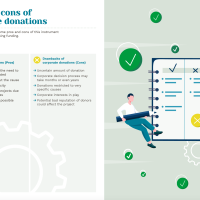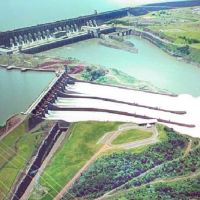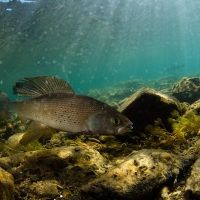European Nature Restoration Law takes significant step towards adoption

A provisional agreement was reached on a major EU law supporting the ambitious ecological restoration of Europe’s land, water and seas last week.
The path to the adoption of the EU Nature Restoration Law has been long and complex. Originally proposed in June 2022, the law was designed to obligate European countries to restore at least 20% of their land and seas by 2030, and eventually extend measures to all ecosystems in need of restoration by 2050.
The poor condition of many European ecosystems and the worsening climate crisis mean there is a critical and urgent need for large-scale ecological restoration across the continent. However, the Nature Restoration Law has faced sustained criticism from lobbying groups concerned with its impacts on food production, with the European People’s Party (EPP) chief negotiator, Christine Schneider labelling it as “an attack on European agriculture, forestry and fisheries.”
In July 2023, the European Parliament adopted the Nature Restoration Law after a narrow vote, following months of lobbying and debate. Last week, a provisional agreement was reached between the European Parliament and the Council on the Nature Restoration Law to set the formal adoption of the law in motion.
Negotiators agreed on the targets for EU countries to restore 20% of their land and seas by 2030, and all ecosystems in need of restoration by 2050. To achieve these goals, countries must restore at least 30% of habitat types in poor condition by 2030, increasing to 60% by 2040, and 90% by 2050.
“We are faced with an increasingly dramatic reality: EU’s nature and biodiversity are in danger and need to be protected,” said Teresa Ribera Rodríguez, Minister for the Ecological Transition of Spain. “I am proud of today’s indispensable agreement between the Council and Parliament on a nature restoration law, the first of its kind. It will help us rebuild healthy biodiversity levels across member states and preserve nature for the future generations, while fighting climate change and remaining committed to our climate goals.”
Freshwater ecosystems will benefit from the adoption of the Nature Restoration Law. The law states that EU countries should identify and remove human-made barriers such as weirs and dams, in order to make at least 25,000km of the continent’s rivers free-flowing by 2030. Moreover, there are significant provisions to expand and improve European forest ecosystems and urban green areas – which play vital roles in supporting the health of river catchments.
However, concessions have been made in the law to appease the concerns of agricultural lobbying groups. The new text removes a requirement that would have ensured that 10% of farmland contained biodiversity habitat such as flower strips and hedgerows. Similarly, a new line adds that countries are not obliged to use EU farming funds to support nature recovery projects.
These concessions have impacted how peatlands – vital stores of carbon, havens for biodiversity, and buffers for flood waters – will be rewetted across the continent. The law sets targets for countries to restore 30% of their drained peatlands under agricultural use by 2030, rising to 40% by 2040 and 50% by 2050. However, negotiators agreed that countries that are ‘strongly affected’ by such measures can work towards less ambitious targets. Moreover, the law does not obligate farmers and private landowners to achieve the rewetting targets on their land.
The Nature Restoration Law is an integral part of the EU Biodiversity Strategy for 2030. More widely, it is designed to help the EU reach international commitments to the restoration of nature, particularly the UN Kunming-Montreal global biodiversity framework – to protect 30% of the planet by 2030 – agreed at the UN COP15 conference in 2022.
One strategy adopted by proponents of the law has been to cite the economic benefits of large-scale restoration across Europe. Their cost benefit analysis suggests that every Euro spent on restoration provides a return on investment between €8 and €38 depending on the ecosystem. For freshwaters, it is estimated that €35–40 billion in investment into restoration will generate between €862 to 1053 billion in return. This is due to the benefits that healthy, functioning freshwaters provide to society: things like water purification, flood protection, fish stocks, and climate change mitigation. In other words, this analysis suggests that large-scale freshwater restoration doesn’t only make environmental sense, it makes economic sense too.
The Nature Restoration Law must now be formally adopted by the European parliament and council. Once adopted, EU countries will submit national restoration plans showing how they will deliver on their targets towards 2050. Additionally, countries will be encouraged to explore private and public funding sources to help finance restoration measures.
However, the “biggest hurdle” for the law is potentially yet to come, according to Chiara Martinelli, Director of Climate Action Network Europe. “While we are glad to have a provisional institutional joint agreement before the end of the year, restoration obligations are yet to be assessed,” Martinelli said. “There is also the biggest hurdle still to come which will be its adoption by the Parliament’s Environment committee. We call on MEPs to vote for the approval of the agreement, so Member States can immediately reverse the degradation trend in European ecosystems and jointly tackle the climate and biodiversity crises.”
///
This article is supported by the MERLIN project.















Comments are closed.